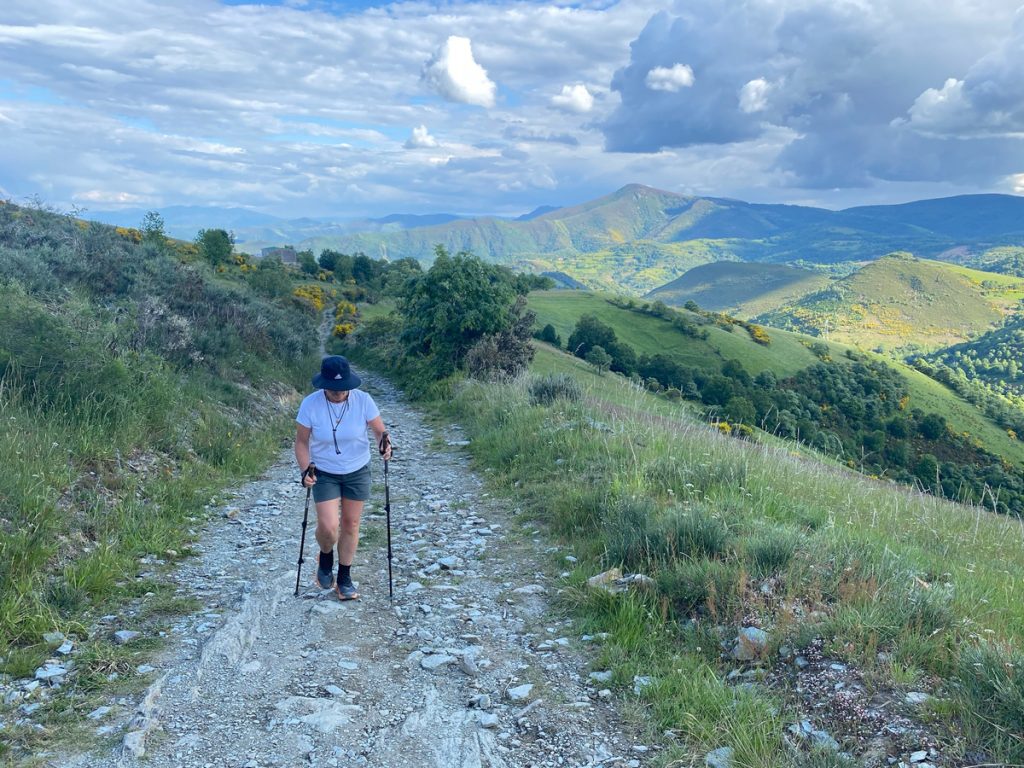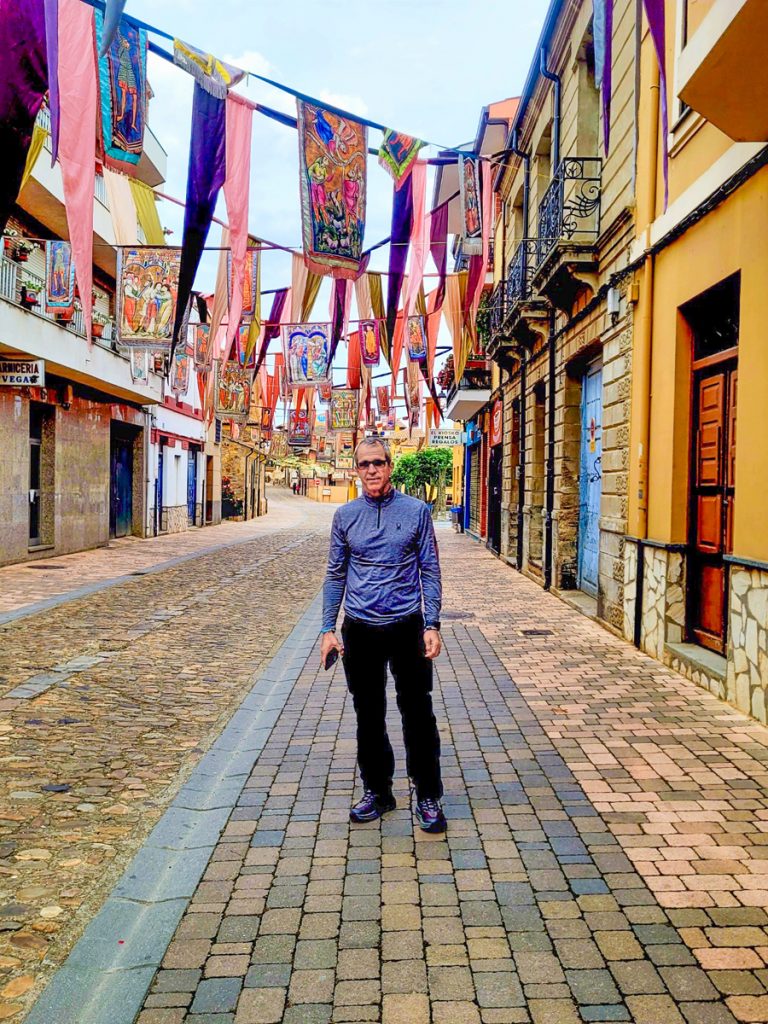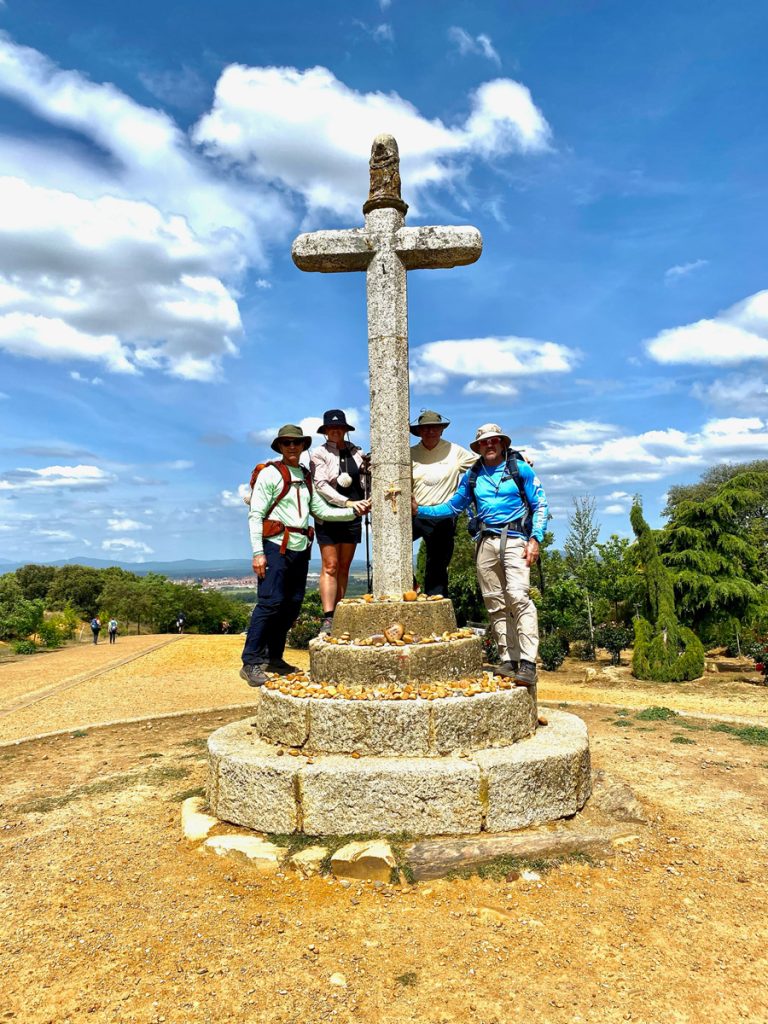Walking in the footsteps of history
Our journey would begin in Miami, on a flight overseas to Madrid, Spain. Strapped with nothing but our packs and trekking poles, a train would take us from Madrid to León. It felt oddly reminiscent of how my whole interest in this pilgrimage began. I couldn’t help but feel things had come full circle.
But let’s back up for a moment. My enthusiasm for the 220-mile Spanish trek we were about to embark on began in 2005 when I first heard about it in London after finishing the London Marathon with my younger brother, Luis. A young lady carrying a large backpack boarded the train we were on and sat directly across from me. I was curious, so asked her where she was coming from. “The Camino de Santiago,” she told us. She proceeded to tell us all about the Camino, which translates to, “the way.” I knew right away that I would walk it one day.
Eighteen years later, it was time. I was done putting it off to another year. We are not guaranteed tomorrow, I argued to myself, knowing that I would forever regret not making time for this. I shared my desire to walk it with my wife, Nancy, and she was immediately on board to do it with me. I then asked my brother Luis to join us. He eagerly agreed, remembering the woman with the pack all those years ago.
The final person who would join us on our pilgrimage was my 76-year-old uncle, Freddy, who lives in Colombia. Little did I know when sharing my idea with him that this was something he had been dreaming of doing since he was in college. It all seemed meant to be.

The Journey Begins
The Camino de Santiago has existed as a Christian pilgrimage for more than 1,000 years. There are several routes but the most popular is the French way. It covers 500 miles from Saint-Jean-Pied-de-Port in France and finishes at the Cathedral of Santiago de Compostela in Spain. It takes approximately 35 days to complete the 500-mile pilgrimage. Since we didn’t have 35 days, we decided to start our pilgrimage in the city of León which is roughly the mid-point of the Camino French way.
When we arrived in León, we picked up our Pilgrim Passports, which would help us keep track of our journey, and set off on our way. We averaged 10 to 22 miles per day, walking from one town to the next, with rolling hills, vineyards, birch trees, poppy fields, and magical mountains meeting us at every mile.

Experiencing a Culture
It was important to keep our journey simple, hoping to feel a sense of connection to those who walked the Camino long before us. Our nightly accommodations consisted of mainly albergues (hostels with 10-30 bunk beds)—only on two nights did we splurge for private rooms. We found it unifying that only people on the pilgrimage could stay at these albergues.
Mornings involved taping blisters and covering them with Vaseline in hopes of avoiding more. Our journey took us through towns and villages steeped in tradition, with countless stone houses, castles, and historic churches. We even walked across one of the longest and best-preserved medieval bridge in Spain, Puente de Órbigo, which dates back to the thirteenth century.
Yellow arrows on trees, rocks, pavement, and buildings reminded us of our path. But if ever in doubt, we knew to simply follow other pilgrims, many of whom hailed from Spain, Germany, Netherlands, Brazil, Ireland, Japan, Nigeria, and Australia as we would learn. “Buen Camino!” they would say. We quickly learned to appreciate the genuine nature of this well-loved phrase and used it often on our trip.

A Living Dream
Most days we spent seven to ten hours walking, which offered ample time to ponder the journey and so much more. For me, those ponderings were about my future, the blessed life I’ve lived, our girls and grandchildren, but also past and future fears and concerns. I quickly realized life doesn’t have to be complicated; you don’t need much to be happy.
It took us 13 days to walk the 220 miles from León to the Cathedral of Santiago de Compostela, our final 62 of which included Luis’s son, Andres. This meant that three generations would finish the pilgrimage together.
In order to receive an official certificate of walking the Camino when arriving at the cathedral, you were required to show through your pilgrim passport that you had walked a minimum of 100 kilometers (60 miles), showing at least two stamps every day from your albergue or other establishment during your journey. This was your proof, which we took seriously then and hold dearly now.
Our final 13-mile day would be walked as a unit. There was a strong feeling of pride knowing we just journeyed across almost half the country of Spain on foot.
As we entered the Plaza de Obradoiro, the main square outside the cathedral, we heard bagpipes, a sound I’d heard on countless videos leading up to our journey. But nothing could prepare me for the emotions experienced as we heard it in person, an audible marker of the end of our trek. We hugged, cried, and said a group prayer in front of the cathedral. Our pilgrimage, one 18 years in the making (even more for my uncle), was finally coming to a close.
What’s next? Perhaps we will go back and finish the first half of the Camino or better yet, go back and walk all 500 miles. One thing is for sure: I will not put it off by saying, “someday.” There is no time like the present.

Comments are closed.